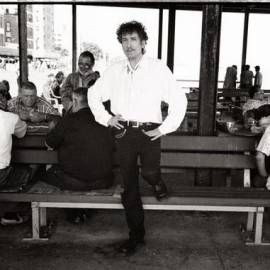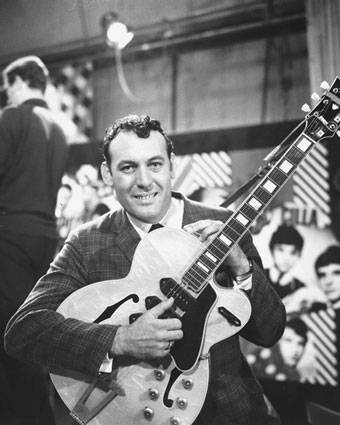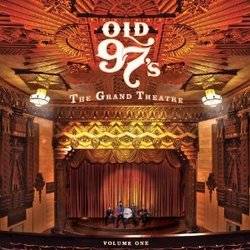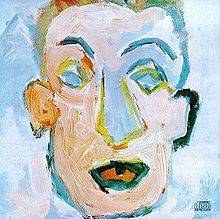 When I found out a couple of weeks ago that Bob Dylan had co-written not one, but two songs called “Champaign, Illinois,” I was astonished that I hadn’t heard of either one. How could the man many people consider to be the greatest storyteller of the 20th century reference our town twice without making more than a blip on the local radar? Shouldn’t one of them be some sort of official Champaign anthem?
When I found out a couple of weeks ago that Bob Dylan had co-written not one, but two songs called “Champaign, Illinois,” I was astonished that I hadn’t heard of either one. How could the man many people consider to be the greatest storyteller of the 20th century reference our town twice without making more than a blip on the local radar? Shouldn’t one of them be some sort of official Champaign anthem?
With the former Mr. Zimmerman coming to town this Friday, now seems as good of a time as any to take a closer look.
—————
I got a woman in Morocco,
I got a woman in Spain,
Woman that’s done stole my heart,
She lives up in Champaign.
I say Champaign, Champaign, Illinois,
I certainly do enjoy Champaign, Illinois.
 There is little doubt that Bob Dylan wrote most or all of the above lyrics. They are from the song “Champaign, Illinois, ” co-written by Dylan and Carl Perkins (best known as the man who wrote “Blue Suede Shoes”). The only recorded version of the song was released by Perkins on his 1969 album On Top. Although the song Champaign is just a footnote to most Dylan scholars, it’s an important piece of trivia for them because it is proof that Dylan and Perkins worked together. And it’s an important piece of trivia for locals, because THE Bob Dylan “certainly enjoys Champaign, Illinois.”
There is little doubt that Bob Dylan wrote most or all of the above lyrics. They are from the song “Champaign, Illinois, ” co-written by Dylan and Carl Perkins (best known as the man who wrote “Blue Suede Shoes”). The only recorded version of the song was released by Perkins on his 1969 album On Top. Although the song Champaign is just a footnote to most Dylan scholars, it’s an important piece of trivia for them because it is proof that Dylan and Perkins worked together. And it’s an important piece of trivia for locals, because THE Bob Dylan “certainly enjoys Champaign, Illinois.”
The Dylan-Perkins collaboration is actually an offshoot of a more famous collaboration between Dylan and Johnny Cash. While recording his albums Nashville Skyline and Self Portrait, Dylan spent a lot of time with Johnny Cash, working on some collaborative songs and appearing on Cash’s television show. According to noted Dylan expert Derek Barker, editor of the Dylan magazine ISIS, it was Cash who introduced Dylan to Carl Perkins, “probably at Cash’s home where they enjoyed an evening meal. Dylan wrote ‘Wanted Man’ (with some assistance from Cash), and then he gave the song to Cash. ‘Champaign Illinois’ was written in much the same way, only with Perkins.” However it happened, it is clear that Dylan gave Perkins an unfinished version of the song, which Perkins later finished and recorded.
Nobody really knows whether “Champaign, Illinois” was an older song that Dylan revisited or whether it was one that he co-wrote on the spot with Perkins. Knowing that might help to answer the more relevant local question — why did Dylan pick Champaign as his reference point? There does not seem to be a definitive answer. Possibly the rhyming scheme and sound of the town worked for Dylan. And, as I’ll discuss later, there are some far-fetched rumors that Dylan spent some time here during his earlier days. Barker isn’t sure where it came from. “I have no idea why Dylan wrote ‘Champaign, Illinois.’ I know of no connection to the town, but Dylan was doing some strange things at this time.”
We asked Michael Gray, author of several books on Bob Dylan and the blog the Bob Dylan Encyclopedia to share his thoughts on the song. Gray is considered by many to be the world’s leading Dylan critic.
It’s hard to detect a Dylan influence, but then the song isn’t especially distinctive, or “Dylanesque”, is it? It’s certainly a throwaway; Carl has written better songs for himself, that’s for sure.
I’m inclined to agree with Mr. Gray. It’s not necessarily a bad song, but it’s also not that interesting. The lyrics never amount to more than a breeze, and it seems pretty obvious why Dylan was willing to give it away. Though I must admit I’d like to hear a Dylan version — Perkins’ guitar effects leave a lot to be desired. (I bet we can get him to sing it this Friday? Click here if you’re with me.)
—————
 Bob Dylan’s songwriting connection to Champaign doesn’t end with his Perkins collaboration. On the brand new Old 97’s album, The Grand Theatre, there is a song called “Champaign, Illinois” which is co-written by the band’s singer Rhett Miller and Bob Dylan. The song is related to the Dylan/Perkins song in name only; there are no other lyrical or musical similarities. Of course, that writing credit is a little misleading, as Mr. Miller and Mr. Dylan have never even spoken directly with each other. Dylan’s writing credit is there because this “Champaign, Illinois” is basically an up-tempo, shortened version of Dylan’s “Desolation Row” with different lyrics.
Bob Dylan’s songwriting connection to Champaign doesn’t end with his Perkins collaboration. On the brand new Old 97’s album, The Grand Theatre, there is a song called “Champaign, Illinois” which is co-written by the band’s singer Rhett Miller and Bob Dylan. The song is related to the Dylan/Perkins song in name only; there are no other lyrical or musical similarities. Of course, that writing credit is a little misleading, as Mr. Miller and Mr. Dylan have never even spoken directly with each other. Dylan’s writing credit is there because this “Champaign, Illinois” is basically an up-tempo, shortened version of Dylan’s “Desolation Row” with different lyrics.
The story goes that the Old 97’s were in their van in central Illinois and Miller started rewriting lyrics to familiar melodies because he didn’t have access to his guitar. Eventually, he got the melody to “Desolation Row” stuck in his head and began rewriting the words. Driving through our local area, there must have been a sign for Champaign and the name struck him, though it’s not clear why. Perhaps he was familiar with the area from playing shows here in the late 90s. (Miller’s press agent did not respond to interview requests for this article.)
The band has been playing the song live for years, but hadn’t released it because they did not have Dylan’s approval. Lucky for them, their manager is friends with Dylan’s manager, and through that connection they got a live version of the song played for Dylan. He must have liked it because he requested to see a copy of the lyrics then gave his blessing, agreeing to give Miller a 50% songwriting stake.
And thus was born the perfect tribute to our town, co-written by a popular current band and a living legend. How lucky is it for us that a band like the Old 97’s to build on a Dylan classic and re-title it “Champaign, Illinois?” Well, it turns out we’re not very lucky at all. Here are some excerpts from the lyrics:
If you die fearing God
And painfully employed
You will not go to heaven
You’ll go to Champaign, Illinois
And if you spend your whole life
Rolling horses into Troy
You will not go to heaven
You’ll go to Champaign, Illinois
Roll on blacktop highway
Circles to the sun
Springfield’s in the distance
And that’s the last big one
After that comes judgment
And judgment will be swift
You will be eliminated
But here’s a parting gift
Back to the first chorus.
The Dylan people I got in touch with are split on this song. Gray thinks it is a fun take an old classic. Another Dylan expert called it “swell.” Still others coyly declined to comment.
I’m sure there are a lot of local Old 97’s fans who are tickled by the reference. It’s certainly a catchy tune that will work its way into your head. But ultimately this is a song written with a stolen melody that, at best, equates our town to purgatory. To be blunt, Rhett Miller has turned a landmark song by Dylan into generic Texas “roots” rock piece with no real connection to our town except the name. I say no thanks Mr. Miller — this is definitely not an anthem worthy of this town (or Dylan really). If someone’s going to write a song about Champaign being a hell on Earth, they should at least extend the courtesy of having lived here for an extended period of time.
—————
 And that could be the end of the story, but there are still some rumors that Dylan wrote another song — on which he actually plays the music — that is C-U related. That would be “Wigwam,” appearing on the much-maligned 1969 Dylan album Self Portrait. Many have said the title is a reference to a famous local watering hole from the 1960s.
And that could be the end of the story, but there are still some rumors that Dylan wrote another song — on which he actually plays the music — that is C-U related. That would be “Wigwam,” appearing on the much-maligned 1969 Dylan album Self Portrait. Many have said the title is a reference to a famous local watering hole from the 1960s.
WigWam was a C-U bar in that opened in 1961 — the first owned by the Cochrane family. Various commenters on Dylan sites around the web have suggested Dylan used to hang out there, though none are useful enough to place him there during a specific time period or provide any other details. Though not directly relevant to this story (Dylan’s song came out in 1969), the WigWam later became famous in 1972 as the scene of local gay rights protests.
Overall, it seems a little unlikely the song has anything to do with Champaign or the bar. Here’s what official Dylan historian Sean Wilentz has to say about it:
I can say that one of the early alternate titles during the Blonde on Blonde sessions for a different song (not the Self Portrait “Wigwam”) was “What You Can Do With My Wigwam,” so Dylan was using the word as early as 1966, with no particular connection to Champaign or much of anything else.
Still it’s a rumor that will not die. The biggest reason is that the original “Champaign, Illinois” and the song “Wigwam” found their way into the world around the same time. As ISIS’s Barker explains, “it’s a little strange, or maybe just a huge coincidence, that ‘Champaign Illinois’ and ‘Wigwam’ should appear at the same recording sessions.”
So maybe “Wigwam” really is about C-U. Or maybe it’s not. (And could there really be a better song about Champaign-Urbana than a song that’s probably not really about it at all?) The beauty of the song is that it has no lyrics, but it isn’t instrumental either — this leaves us with all kinds of room for ambiguity and speculation. Plus to make it even more locally relevant, it has a title that is either a tribute to Native American culture or an opportune cooption by a white musician, depending — of course — on your perspective.
“Wigwam,” like C-U, is easy to like, but just a little bit off-putting. It’s a song that attempts to do a lot more than it probably should, fails in some ways, but is much more interesting because it tries. Most importantly, it forges its own strong identity in the middle of an album (area) many people have written off. I say we embrace it.
Bob Dylan performs this Friday, October 22 at the Assembly Hall at 8 p.m. (Prices vary)








